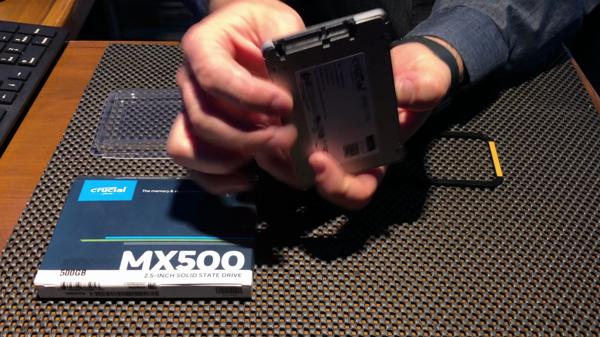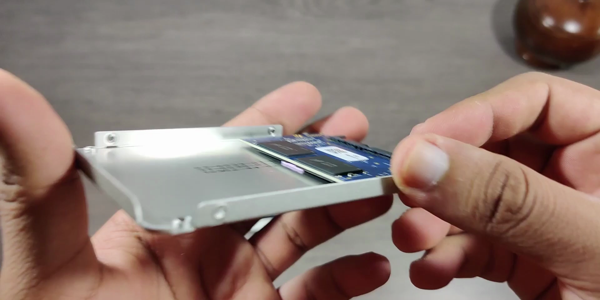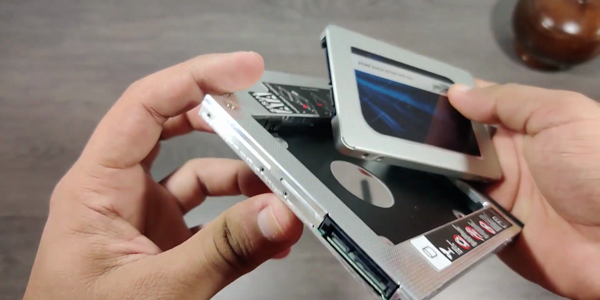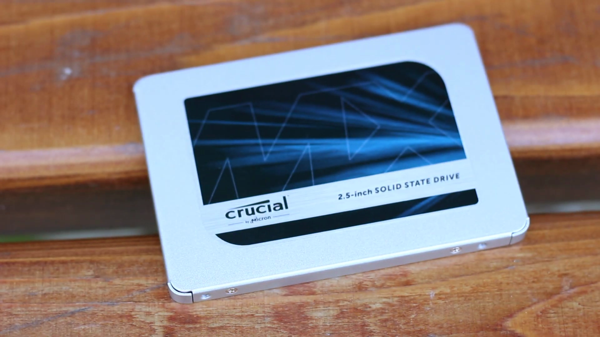Note: As an Amazon Associate we earn from qualifying purchases.
My review of the Crucial MX500 2TB SATA 3D NAND SSD CT2000MX500SSD1(Z) (2024)
Introduction
I recently upgraded my computer with the Crucial MX500 2TB SSD. I was hoping for faster performance compared to my old hard drive, and I also wanted a reliable storage solution that wouldn’t fail me when I needed it most. In this article, I’ll go through my experience with the SSD’s performance, reliability, and the process of installing and migrating my data.
Specifications
| Property | Value | Property | Value |
|---|---|---|---|
| Digital Storage Capacity | 2 TB | Hard Disk Interface | Solid State |
| Connectivity Technology | SATA | Brand | Crucial |
| Hard Disk Form Factor | 2.5 Inches | Hard Disk Description | Solid State Drive |
| Compatible Devices | This drive is compatible with desktops and laptops that accept 2.5” 7mm SATA drives | Installation Type | Internal Hard Drive |
| Color | Blue/Gray | Hard Disk Size | 2 TB |
Photos
Click on photos to enlarge them:
Prices
Check prices of the Crucial MX500 2TB SATA SSD on:
Impressions on Performance and Reliability
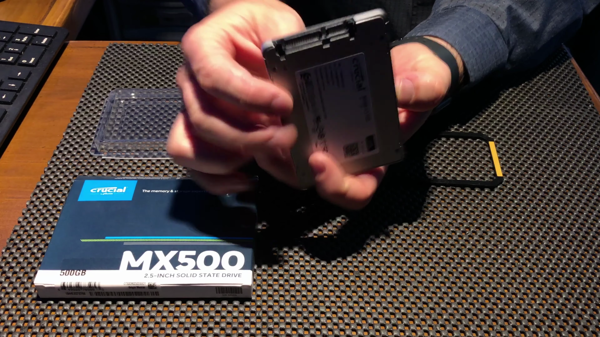
After months of dealing with sluggish boot times and slow file transfers, I decided it was time to give my system a well-deserved upgrade with the Crucial MX500 2TB SSD. As someone who relies heavily on digital storage for work and personal use, the switch to an SSD seemed like an obvious choice.
Impressions on Performance and Reliability:
Speed: The MX500 delivered on its promise of rapid boot-ups and file access. The sequential reads/writes up to 560/510 mb/s are not just numbers on paper; applications launch almost instantaneously, and large file transfers that used to be time-consuming are now a breeze.
Reliability: With integrated power loss immunity and hardware-based AES 256-bit encryption, this SSD provides both data security and the peace of mind that your work won’t be lost during unexpected power cuts.
Installation Ease: While the physical installation of the SSD went smoothly thanks to Crucial’s step-by-step guide, the cloning process was a bit trickier. It’s crucial to have the right cloning software—I had hiccups with a few before I settled on one that worked seamlessly for me.
Customer Service: The support and documentation provided by Crucial were lifesavers. It was reassuring to know that I could count on their guidance when I ran into initial troubles during the setup process.
The MX500’s performance is undeniably a game-changer, especially when it comes to reviving older systems. However, I learned the hard way that being prepared for the cloning process is essential. Despite the promised simplicity, I found that you need to have more than just the SSD on hand—you might end up needing additional hardware like a SATA to USB cable or a mounting kit. The caveat is that though the drive itself may be affordable, if you’re not equipped with all the necessary tools for installation ahead of time, the overall cost and effort might slightly increase.
The drive has worked without a hitch since installation, and it’s impressive how it has transformed my computing experience. I must admit my concern about reaching the SSD’s write limit, but considering that it’s not built on the newer and less durable QLC NAND, I’m confident that it will serve me well for years to come.
The bottom line is, despite some minor setbacks during installation, the Crucial MX500 2TB SSD is a robust and reliable choice for those looking to enhance their system’s performance. The combination of high-speed storage and security features, along with Crucial’s customer service, make it an investment I don’t regret. While not a perfect process, the payoff in efficiency is remarkable.
Enhancing Older Systems with SSD Speed and Efficiency

Updating an aging computer system can feel like a daunting task, but the rewards, especially when it involves switching from a mechanical hard drive to a solid-state drive (SSD) like the Crucial MX500, can be truly transformative. My firsthand experience with this upgrade has shed light on just how impactful it can be for older systems.
Here’s a summary of my findings:
Speed: Boot times and application launch times went from sluggish to lightning-fast.
Efficiency: The system runs cooler and pulls less power, which could even extend the life of my old computer.
Noise: The lack of moving parts in an SSD means the once-audible humming of the hard drive is now silent.
For an older system, these improvements aren’t just about saving seconds of loading time; they fundamentally enhance the way I interact with my computer. Opening programs, switching tasks, or waiting for my system to boot up used to be a test of patience. Now, there’s an immediacy that brings a sense of efficiency to my digital interactions.
However, this upgrade isn’t without its challenges. The installation process, while straightforward for the most part, did require some additional accessories, like a SATA to USB cable. Not to mention the potential for a slight learning curve when it comes to data migration—getting to grips with cloning software and perhaps even BIOS settings can be a bit tricky for those not used to fiddling with their computer’s innards.
From my perspective, these are small hurdles when weighed against the benefits. Any additional costs for cables or mounting kits felt justified, considering the new life breathed into my system. I would advise anyone considering this upgrade to do a bit of research beforehand, understand the requirements of your specific system, and anticipate a little troubleshooting along the way.
Despite the slight hiccup with the cloning software—where free space on the source drive was a factor not clearly communicated in the instructions—the rest of the process was a breeze once underway. It’s important to note that sufficient free space is necessary when cloning your old drive, something I learned through trial and error.
In summary, upgrading an aging system with an SSD like the Crucial MX500 is a high-impact change that can rejuvenate old hardware and delay the need for a costly new purchase. While you may face some initial technical complexities, the end result is a system that’s more responsive, faster, and more enjoyable to use—transforming an outdated machine into one that keeps pace with modern demands.
Value for Money and Long-Term Use Considerations

When considering an SSD like the Crucial MX500 2TB, value for money and long-term use are important factors to weigh. So, let’s break this down in terms of benefits and potential downsides as I see them:
Benefits:
Huge storage capacity: 2TB is more than enough for my family photos, work documents, and a sizeable collection of games.
Speedy performance: Boot and load times are noticeably faster, breathing new life into my older devices.
Ease of cloning and setup: With the right tools, like Acronis for Crucial, cloning my old HDD was straightforward.
Data security: The AES 256-bit encryption offers peace of mind against data theft.
Potential Downsides:
Initial costs: The upfront investment is higher than traditional HDDs but considering the performance boost, it is well justified.
Installation extras: You might need to buy additional tools like a SATA to USB cable or a mounting kit, which adds to the overall cost.
Software hiccups: I ran into some snags with the Acronis software requiring more free space on the old SSD to install properly.
Now, speaking from personal experience, I’ve noticed a tremendous improvement in overall computer responsiveness once the SSD was installed. And it wasn’t just in boot times; applications load faster and file transfers zip by at speeds I hadn’t seen with my old setup.
On the flip side, it’s worth mentioning that while the process is mostly user-friendly, it isn’t exactly plug-and-play. I had to do my homework on the cloning process, figure out which tools I needed, and in one case, troubleshoot software installation issues. But once those hurdles were cleared, it was smooth sailing.
The question of longevity also favors an SSD. With no moving parts, the risk of mechanical failure is significantly reduced, meaning I can expect this drive to last considerably longer than an HDD, barring any manufacturer defects.
In summary, the Crucial MX500 2TB SSD stands out as a valuable investment for its relentless performance and beefy storage capacity. However, the transition from HDD might require a bit of additional learning and some extra hardware. All things considered, the investment in time and money has been worth it for the sheer improvement in my computing experience. This SSD doesn’t just keep up with my demands; it accelerates them, making it a worthy upgrade for personal and professional use.
